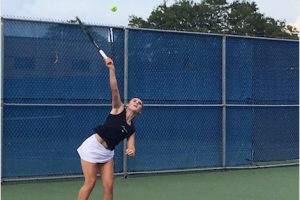When 1 is Greater than 3
Do: Specialize Don’t: Multiple

November 23, 2015
Coming into high school, I knew there were a lot of different sports I could try. I had been a swimmer through middle school, and I briefly considered joining something new. But from that very first year in high school up until a few days ago, I stuck with one sport. I trained year round both on the school swim team and a club team off-season.
One of my best friends is on the boys swim team, how many sports does he participate in? One. I’ve spent my summers training with him twice a day for months. But all that hard work has begun to pay off. He’s about to start his season in great shape. All because he focused all this energy and attention to the one sport he’s really passionate about.
I know there are some benefits to being a multi-sport athlete, but I’ve noticed greater success in those who compete in one season a year, especially if they train year round. These athletes are in the pool for over 250 days a year. Every season, they arrive stronger, faster, and better than ever before.
Multi-sport athletes are very well rounded athletes. They possess skills and strengths in various athletic areas. They are often the ‘best’ athlete in gym class. But when it comes to competition, they suddenly find themselves just above average. This is because they lack the extensive training to enhance a single skill set. They may also have greater difficulties in the classroom. There they have to manage the material and homework while juggling practice, competitions and the travel to and from. While surviving this vicious cycle is impressive, it rarely produces top caliber students or athletes due to its sheer difficulty.
Relieved of year round competitions, single sport athletes can focus on honing skills and developing academically. They come in two types. The athlete that trains year round and competes during the season, and the athlete that only practices and competes during the season. In either case, their schedules are far more flexible and forgiving than those of multi-sport athletes. In my experience, this system has produced highly-skilled and successful competitors, who, without the additional stress of additional seasons, are able to truly become the very best they can inside the classroom and out.
Of course, the interesting part of the debate comes when a student uses one or two seasons to prepare for their prime season, a way of cross-training. These athletes often aren’t looking for varsity positions or serious competition in their secondary seasons. Many football players will do track to work on speed. In fact, for many athletes, track is a great way to work on speed and agility while sports like wrestling and gymnastics provide outlets to improve strength.
All in all, the choice as to how many sports a student should participate in is theirs. It’s a question of how hard you’re willing to work and where you want to concentrate your effort. At the end of the day, a student needs to decide what is a best fit for them. No doubt, athletic activity is beneficial to all participants in some way.







